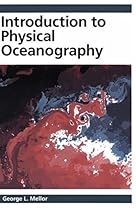Introduction to Physical Oceanography

| Author | : | |
| Rating | : | 4.25 (999 Votes) |
| Asin | : | 1563962101 |
| Format Type | : | paperback |
| Number of Pages | : | 260 Pages |
| Publish Date | : | 2014-06-03 |
| Language | : | English |
DESCRIPTION:
An Admirable Work in Progress Ben J Korgen Mellor (2008) is a textbook intended for use in college courses for upper division undergraduate and beginning graduate students. The usefulness of this book might depend on whether its users enroll in an oceanography program or in a physics department.In oceanography programs, two common ways exist for directing an introduction to physical oceanography course. One approach does it in two courses, with description in the first semester and dynamics in the second.Using this approach, students with almost any background including physics take the descrip
Among the many appendices is one on the method of Matched Asymptotic Expansions as applied to the Gulf Stream the most modern and systematic way of looking at boundary layer problems. Written by a renowned fluid dynamicist specializing in computational methods (particularly in turbulence), this introductory text addresses the subject of dynamic oceanography from a mathematical approach. Problems are included at the end of each chapter.. The book begins with the basic equations of motion in integral form and covers such essential topics as geostropic flow, barotropic and baroclinic ocean circulations, vorticity, and the astronomical tides
The information provided in the Introduction to Physical Oceanography give students the background they need for further study of the oceans. . The text is enhanced by numerous figures and diagrams, with appendices providing details of mathematical topics. From the Back Cover Working at advanced levels of oceanography requires a firm grasp of the mathematical and physical underpinnings of oceanic processes. Physicists, meteorologists, and engineers in other specialties will find it a useful reference on fluid dynamics relevant to oceanography. Specific topics include the equations of motion, scaling analysis, geostrophic flow, atmospheric and oceanic boundary layers, barotropic and baroclinic flows, ocean circulation, surface
